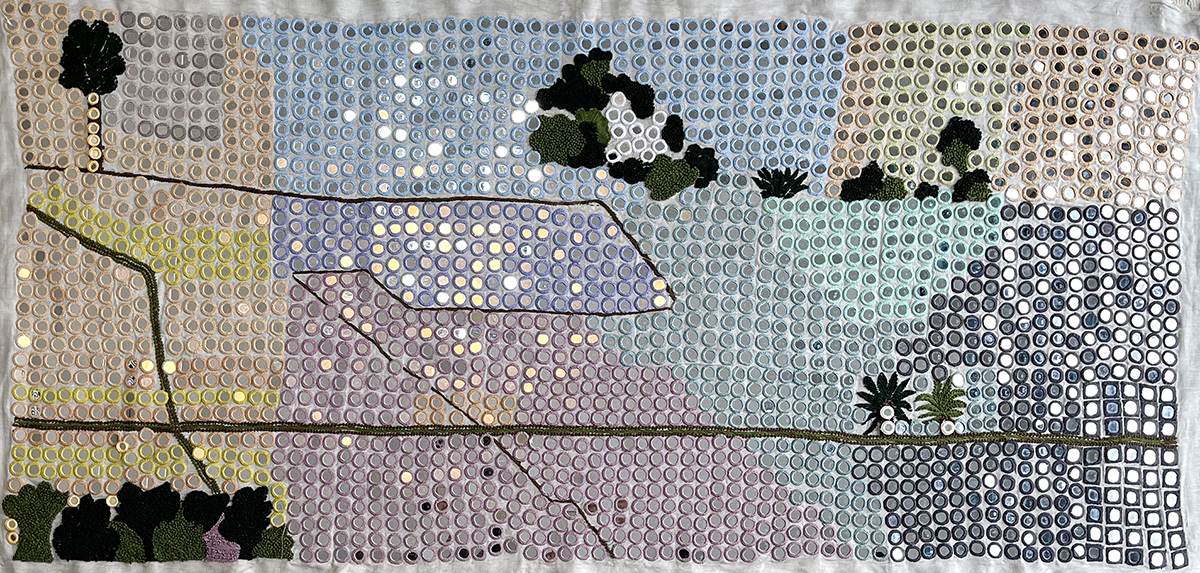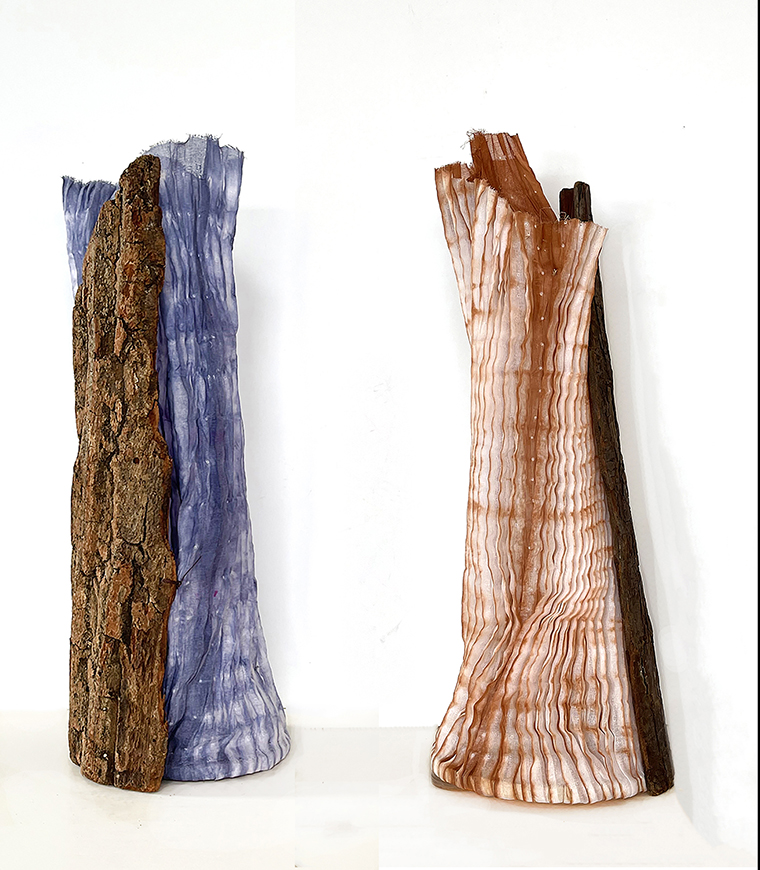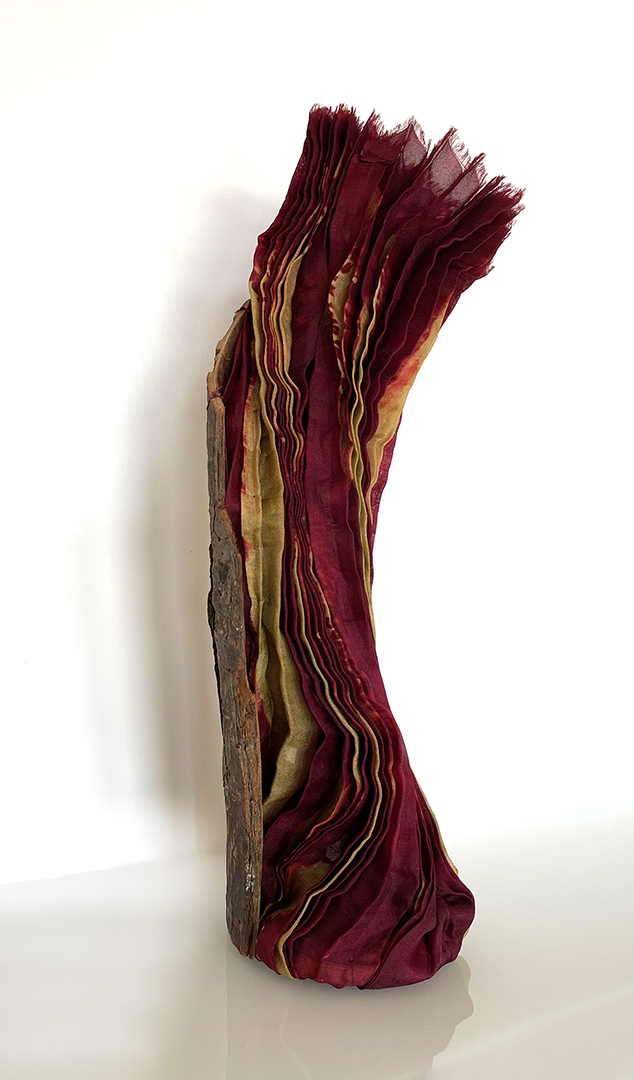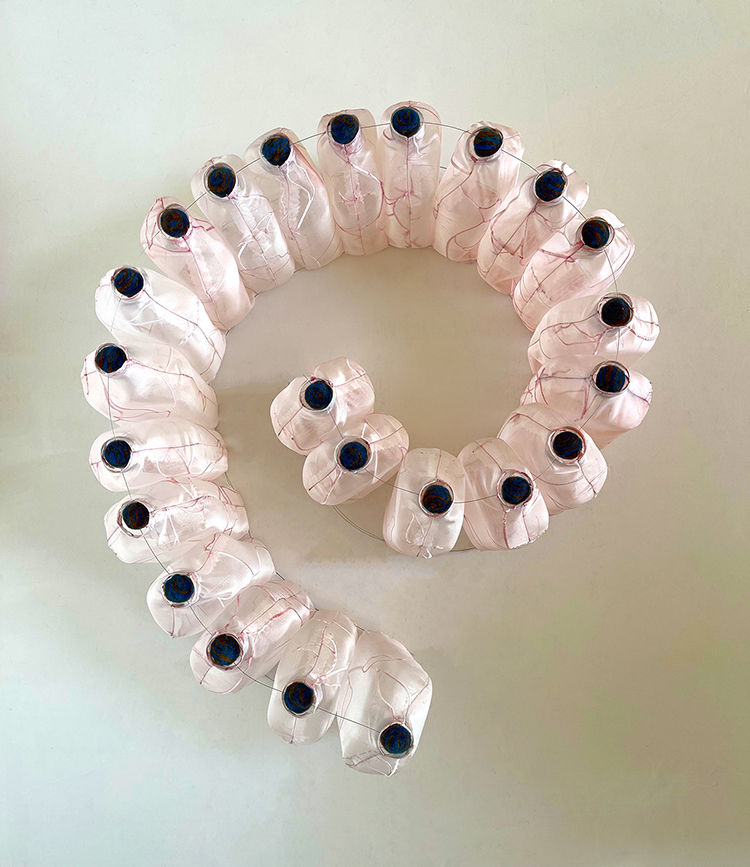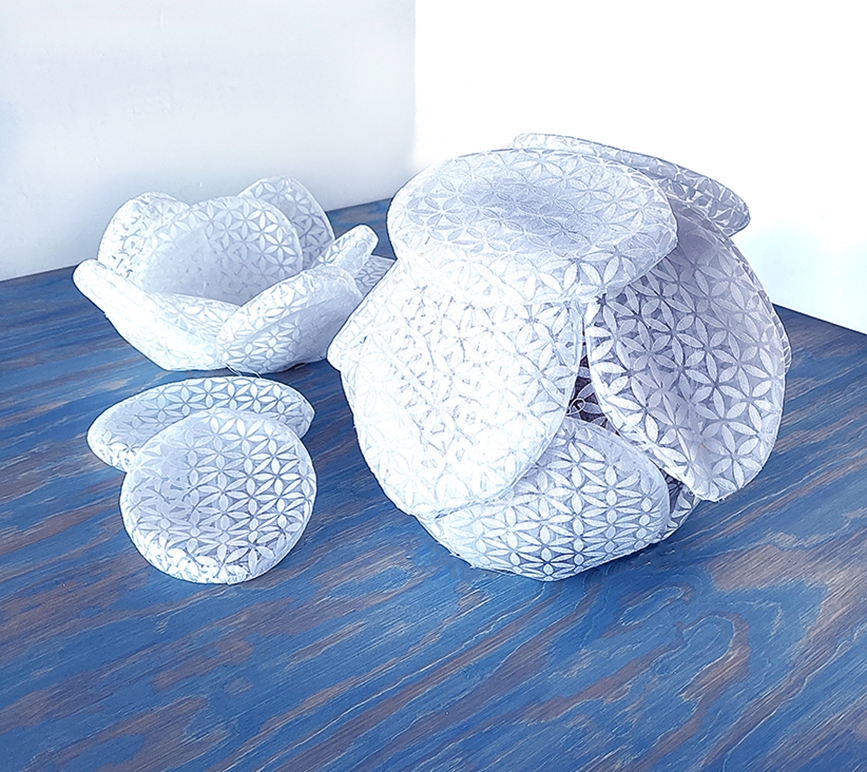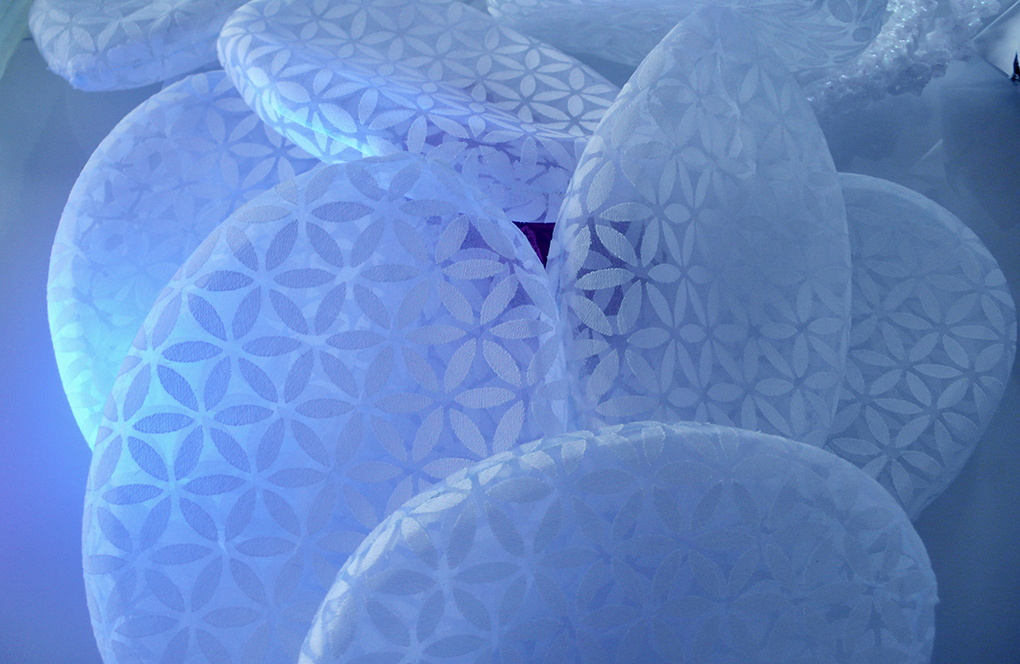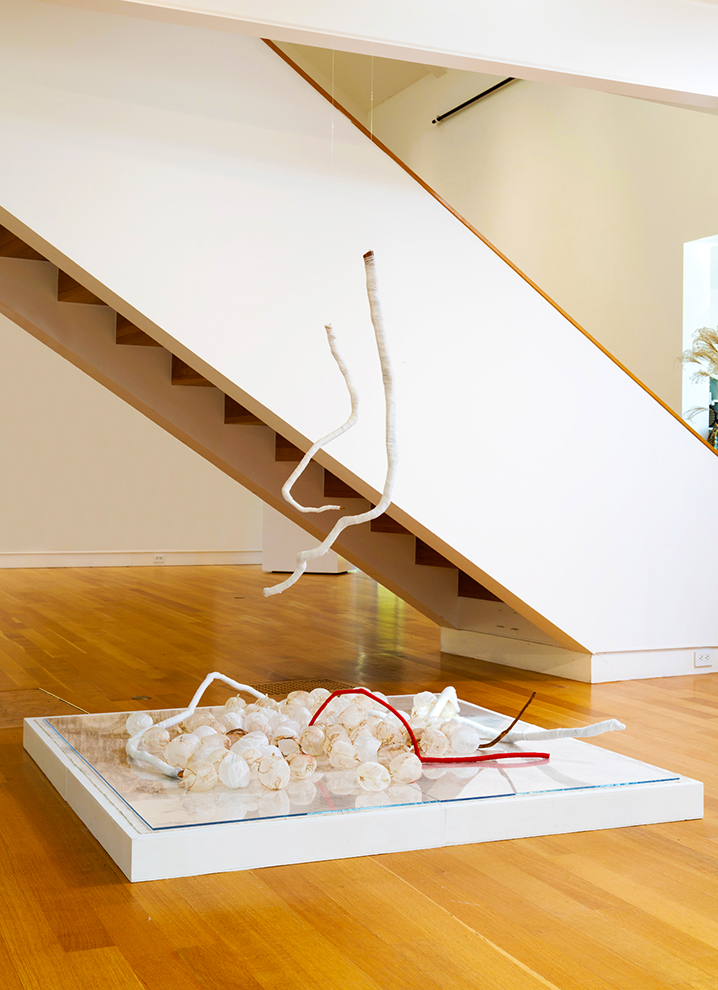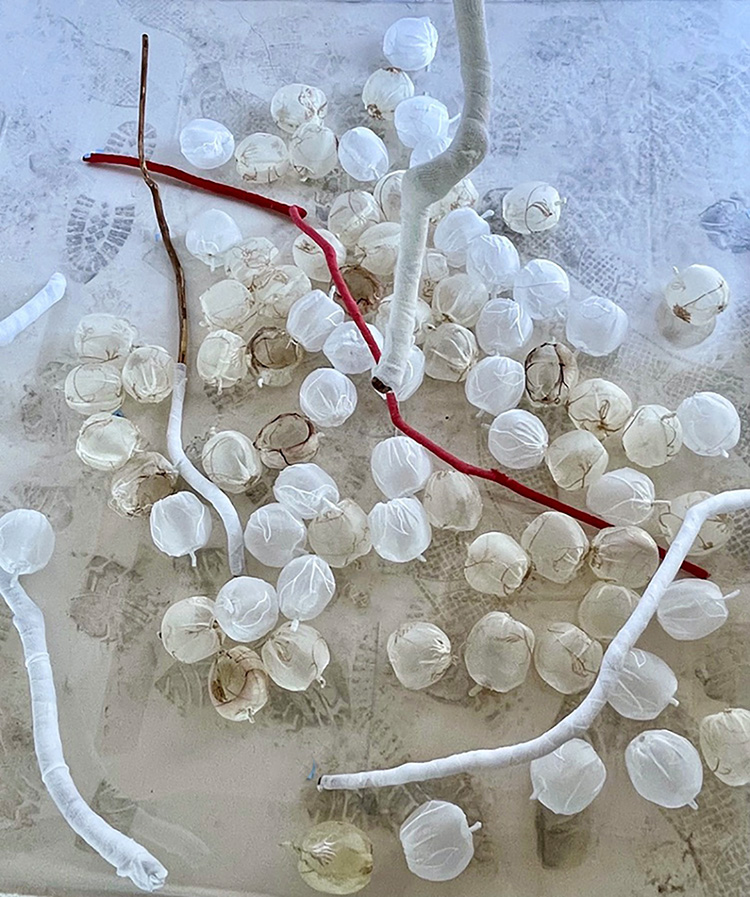Saberah Malik
Water, Water Everywhere – dyptich, 2023
mirrors, embroidery floss. 27" H x 88" W x .25" D
Months after Pakistan’s 2022 mega floods, the strange beauty of vast inundated farmlands shimmering in sunlight or moonlight as seen from above, belie the cruel existence on ground. Employing local needle-art traditions, this is a testament to women’s grit for survival against ongoing political, social, environmental injustices.
Saberah Malik
Water, Water Everywhere – panel II, 2023
Mirrors, embroidery floss. 27" H x 60" W x .25" D
This new work is made possible by a Rhode Island State Council on the Arts grant, that has facilitated my partnering with flood impacted women needle-artists in rural Pakistan. It is a celebration of regional and traditional embroidery skills that have been historically employed for story telling. My interpretations, in keeping with my personal aesthetic, are more abstract and emotive than representational.
Saberah Malik
Temperature of Engagement, 2023
Vintage pillow covers 120" H x 19" W x 48" D
Embodying milestones of joyful family memories, mirror work embroidered cushions have been an integral presence in my domestic spaces. Past their prime usage, these collected textiles affirm my commitment to reuse, preservation and sustainable art materials.
Saberah Malik
The Tree and I – I and II, 2023
Cotton organdy, tree bark 16" h x 7" w x 7" D each
Experiencing nature with intimacy born of proximity, tenderness for prematurely broken branches or wind whipped shrubs, triggers a protective tenderness within me. I connect bits and pieces of these fallen trees with formed textiles as visual requiems, as recorded memories of nature’s fury.
Saberah Malik
The Tree and I – III, 2023
Silk organza, tree bark. 18" H x 7" w x 7" D
My intimate relationship with trees in my yard for over a half century, makes a tree’s death as painful as losing a family member. I connect bits and pieces of these fallen trees with my textile work as visual requiems, as memorials to loss.
Saberah Malik
Sightings, 2023
Polyester fabric, felt spheres 9" H x 24" W x 24" D
With a focus on different aspects of water resources, my oceanographic work addresses phytoplankton morphology and health for understanding oxygen production balance and food chain priorities. Semi-transparent barrel-shaped sea-salp curl up then gracefully unfold their chains throug
Saberah Malik
E. HUX – III, 2021
Polyester Fabric, styrofoam sphere. !4" H x 36" W x 24" D
Emiliania huxleyi, or E. HUX. for short, is a single-celled calcifying phytoplankton species producing considerable amounts of biomass and calcium carbonate in the ocean, supporting the uptake of carbon dioxide at the surface and releasing a climate-cooling gas, dimethyl sulphide (DMS). It is found in almost all ocean ecosystems from the equator to sub-polar regions.
Saberah Malik
E. HUX – detail, 2022
Polyester fabric, Styrofoam sphere 14" H x 36" W x 24" D
Microbial phytoplankton, floating in the upper regions of the ocean, access sunlight to convert into oxygen, and absorb carbon dioxide that is then stored in a ‘carbon sink’ when their remains float down to the ocean bed. E. HUX plates attach themselves in a spherical form, then detach as they die. They are found in large concentrations known as blooms.
Saberah Malik
Silenced, 2021
Polyester fabrics, wood, canvas, gauze bandage 80" h x 60" w x 60" D
In the fall of 2019, apple orchards lay wasted, bull-dozed and trampled upon by occupying forces in the vale of Kashmir. Married into a Kashmiri family, I continuously witness the grief and pain of family members. The world’s silence to human rights abuses there is as deafening as the Kashmiri’s sense of helplessness, hopelessness, with no available source of compassion to help heal systemic injuries to people or to nature. The land lies silenced, the people are silenced and we are all guilty of being silent witnesses.
Saberah Malik
Silenced – detail, 2021
Polyester fabrics, wood, gauze bandage, elastic tape, canvas. 96" H x 60" W x 60" D
I create ethereal, luminescence, dimensional work that captures rhythms of filtered light. The apples in their transparency are like ghosts of the apples destroyed. The single red element hints at the scars inflicted on nature.

